The best 39 hi-fi speakers of What Hi-Fi?'s lifetime
We reminisce about the very best stereo speakers we have reviewed since 1976
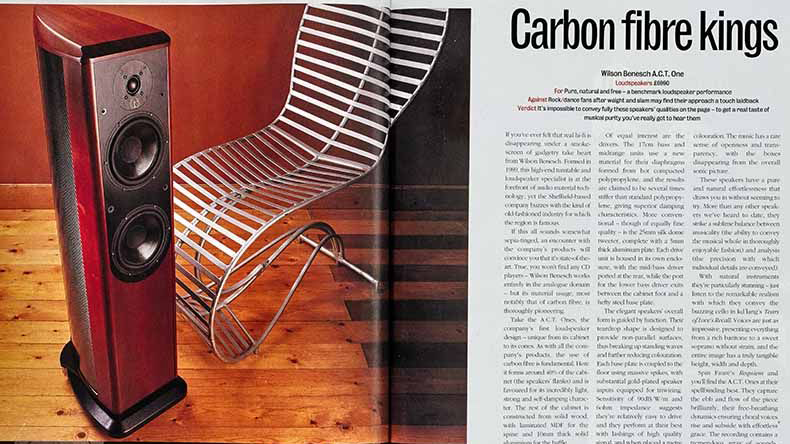
Along with amplifiers, record players and TVs, one of the products most closely associated with What Hi-Fi? is stereo speakers. We have been testing stereo speakers ever since our first issue in 1976, and while there have been hundreds of speakers that have passed through our various test rooms, the speakers we have highlighted here are ones that have left a lasting impression in our minds (and in the hi-fi industry as well).
The idea behind a stereo speaker hasn't changed much and is relatively simple, with an enclosure (sometimes small, sometimes big), drivers and crossover capable of taking an audio signal from an amplifier and pumping out sound as the drivers move as accurately as possible. Advancements in technology, machining processes and the discovery of new materials have refined this engineering concept further, with brands able to constantly find new and better ways of making music sound great.
This ever-expanding list is a celebration of the stereo speakers that have a special place in our hearts – and yours too, hopefully – as we flick through nearly five decades of What Hi-Fi?'s past for the best pairs of speakers that we have listened to and enjoyed in our test rooms.
KEF Coda II (1982)
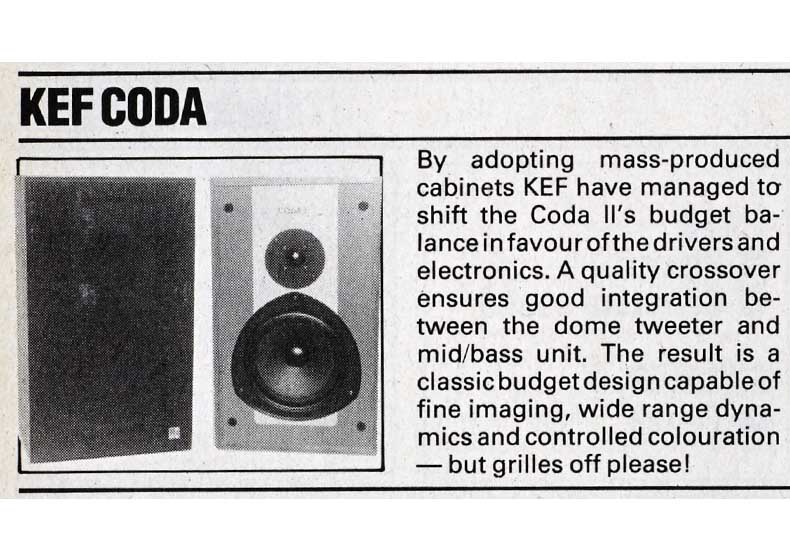
The KEF Coda II were budget speakers designed to be compatible with amplifiers that delivered 10 or more watts per channel, and they offered exceptional value.
Though the Coda II's tonal balance was on the brighter side, they leavened that with an open sound and accurate imaging.
These two-way speakers were available in two finishes (black or simulated walnut veneer) and they looked pretty good, especially when you took the grilles off.
Wharfedale Diamond I (1982)
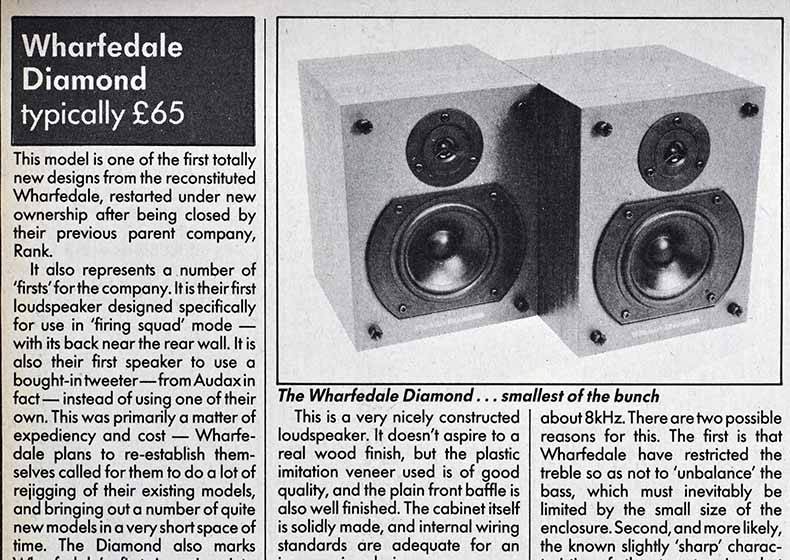
The original Wharfedale Diamonds were pint-sized efforts for those who needed a speaker to fit into a tight space.
Get the What Hi-Fi? Newsletter
The latest hi-fi, home cinema and tech news, reviews, buying advice and deals, direct to your inbox.
They were nicely constructed, with a solidly made cabinet (an enclosure of just over five litres) and a finish that traded real wood for a good quality plastic imitation veneer.
With sophisticated midrange and bass performance for the price, the Diamonds were fussy in terms of partnering kit but excelled with more upmarket amplification.
MORE: That Was Then... Wharfedale Diamond review
Mission 70 Mk II (1983)
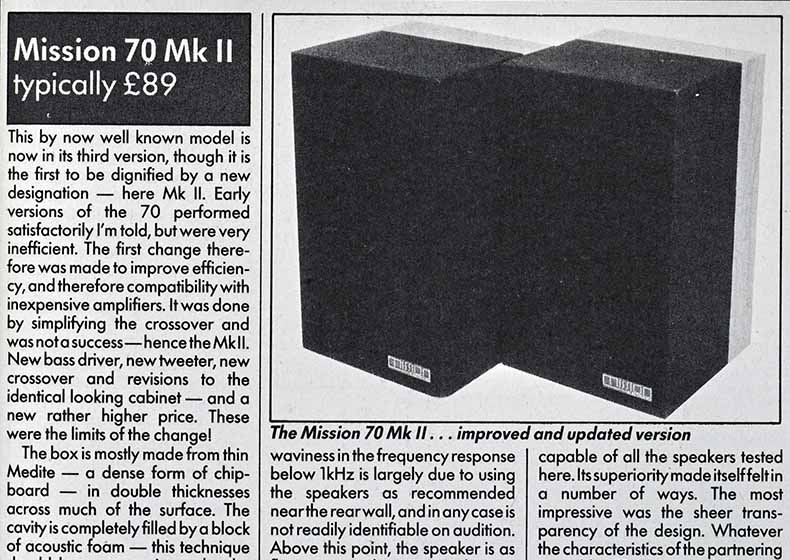
By 1983 Mission had updated its '70' speakers and, despite the model number, the 70 Mk IIs were the third iteration.
That gradual process of evolution led to a pair of speakers that had breadth, scope and vividness beyond their peers. And in spite of the speaker's small size, they had the sound of a larger, more expensive unit.
Treated well, the Mission 70 Mk IIs produced an exciting listening experience.
MORE: Old speakers vs. new speakers: How do they compare?
Heybrook HB1 (1983)
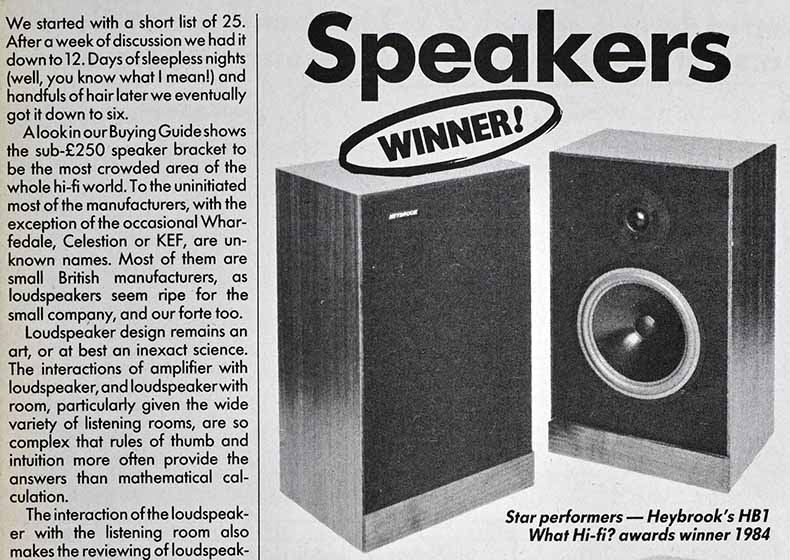
The Heybrook HB1s were a highlight of What Hi-Fi?'s early years, winning multiple Awards in the early 80s.
The HB1s were entry-level speakers, and though they worked well with budget equipment, they excelled when partnered with top-quality electronics.
With a high-quality finish and dynamic sound, the HB1s were another example of a speaker that could hold its own against much more expensive efforts.
Acoustic Energy AE1 (1988)
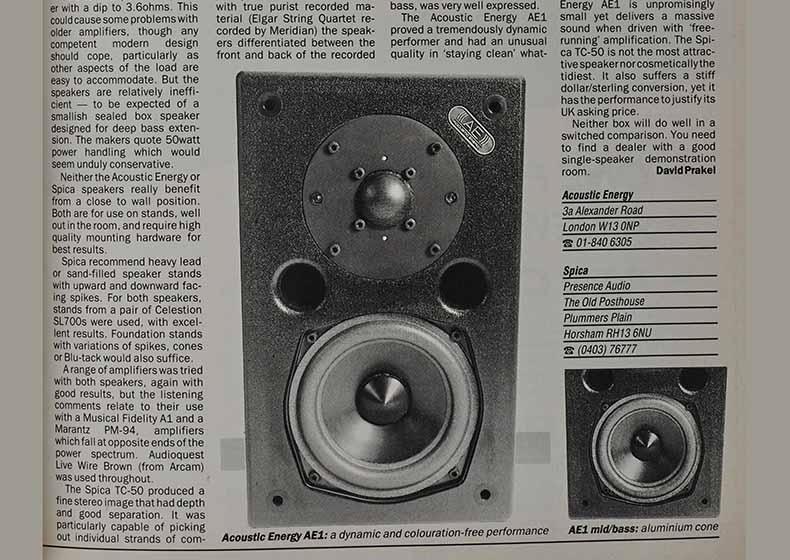
Acoustic Energy's AE1 were on the smaller side, but let them rip and they were capable of impressive punch and dynamic reach.
They featured metal drivers (rare for the time) and the internal cabinet walls were plaster-coated to minimise the build-up of unnatural standing waves.
Care was required when positioning, but get it right and the huge soundstage, accuracy and speed of delivery on offer were superb.
Read our Acoustic Energy AE1 Classic review
Epos ES11 (1991)
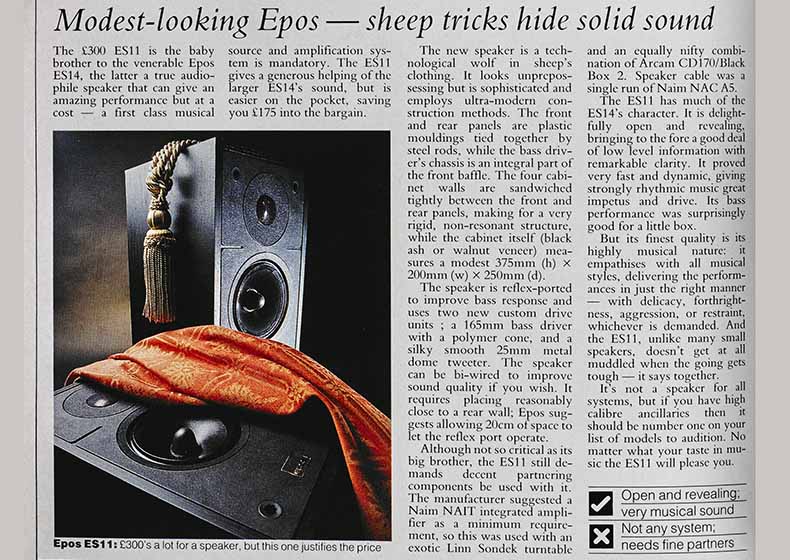
We enter the 90s with the Epos ES11, which were similar in sonic character to the legendary ES14 but available for a fraction of the price.
As was usual for the brand, the crossover was minimal: it employed a single capacitor for the tweeter. That helped the ES11 produce surprisingly sturdy bass and excellent resolution, as well as superb rhythmic drive and dynamic expression.
A really musical pair of speakers, they could deliver just the right amount of aggression, delicacy or restraint a song demanded.
Monitor Audio Studio 20 (1992)
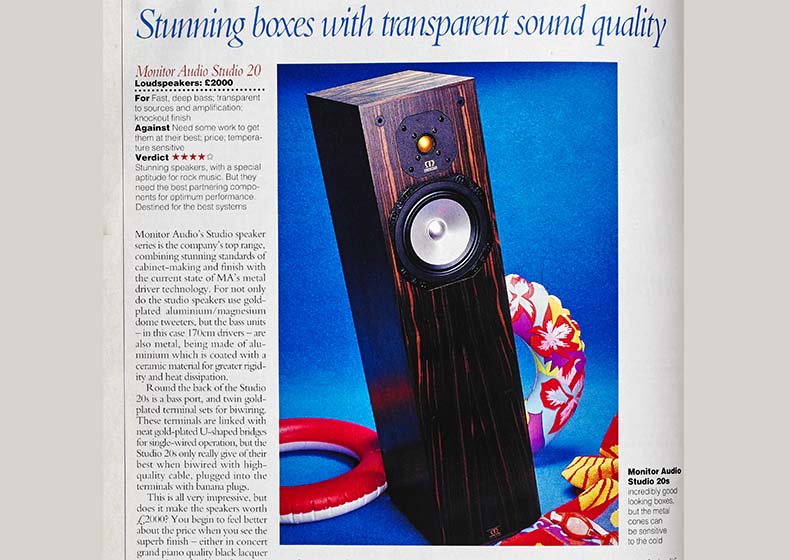
£2000 was a lot for a speaker back in 1992 (and it still is today), but the Monitor Audio Studio 20s weren't your run-of-the-mill floorstanders.
With metal drivers on board, they delivered fast, deep bass, punchy overall sound and sweet treble. This made the Studio 20 one of the most detailed-sounding speakers we'd encountered at the time.
They needed some fine-tuning and a fair bit of running in thanks to those metal drivers but, these issues aside, they were incredibly well-made and finished, and were terrific-sounding speakers.
Mission 753 (1992)
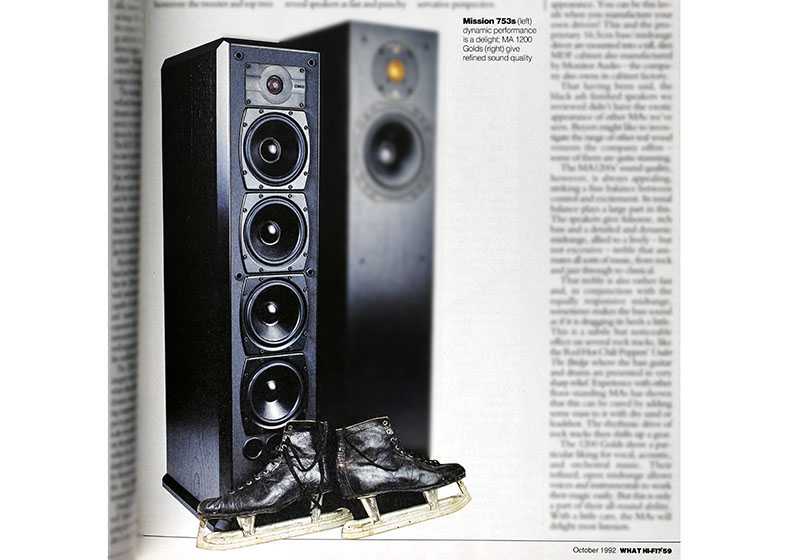
The 753s were stylish floorstanders that produced a dynamic performance.
They had a smörgåsboard of drive units with four 13cm drivers – two mid/bass drivers, two low bass units – and a single 25cm dome tweeter packed into the floorstander's slim cabinet.
The Missions didn't do laid-back, offering a fast and punchy listen that had a real sense of vitality for those willing to take the time to run them in properly.
They were an all-round delight for anyone who enjoyed an involving and exciting sound.
Tannoy Mercury M2 (1997)
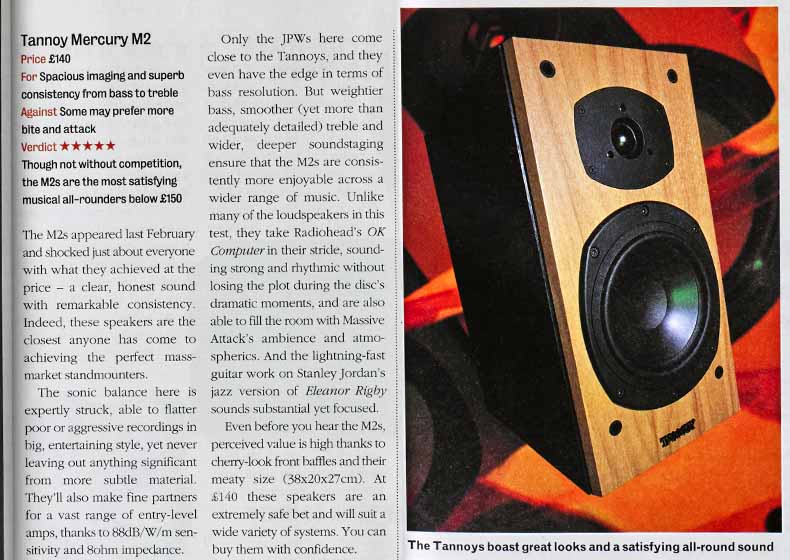
The Mercury M2s speakers entered the market in the late 90s and made an immediate impression.
Our review team hadn't heard a more satisfyingly musical all-rounder at this price level. The larger-than-average M2 generated a performance that struck an expert sonic balance, with consistently superb bass and treble performance.
Back then, we felt they were the closest anyone had come to creating the perfect mass-market standmounter.
Dynaudio Contour 1.1 (1999)
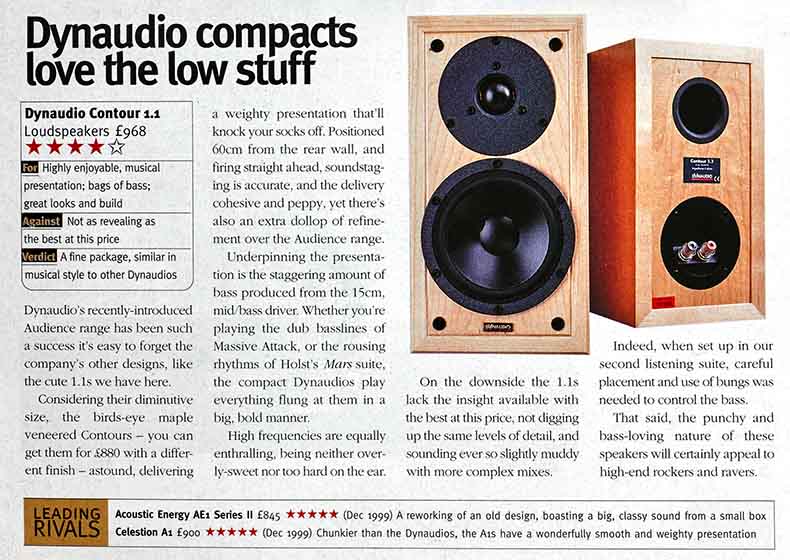
The Contour 1.1s were medium-sized standmounters that proved size was no barrier to delivering solid bass.
The quantity of bass didn't affect detail or insight, as the Contours benefitted from a great sense of timing. And their talent with high-frequency delivery found the right balance between sweetness and attack.
If you liked your music to be delivered with a punch, the Contour 1.1's dynamic performance, excellent timing and satisfying bass made them a terrific buy.
Read the Dynaudio Special Forty review
Wilson Benesch A.C.T. One (1999)
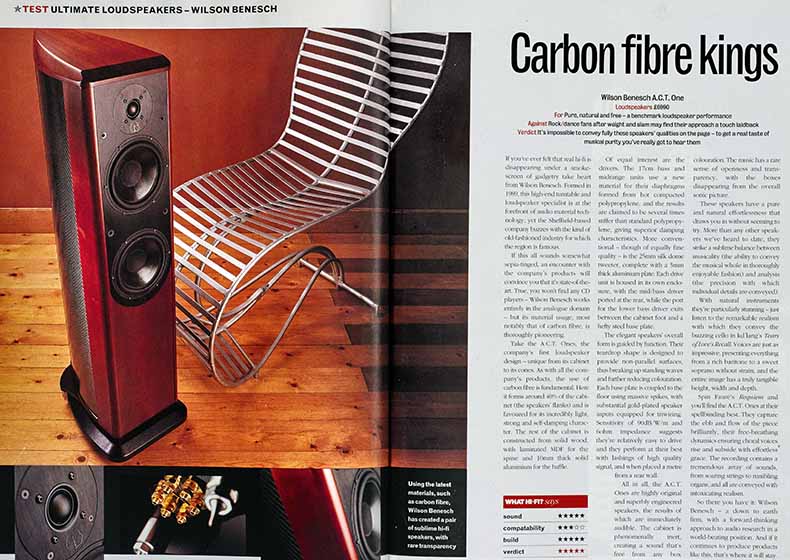
Wilson Benesch made a big splash with its first loudspeaker, the A.C.T. One, on the eve of a new millennium.
Made mostly of carbon fibre, solid wood and laminated MDF, these high-end speakers were superbly engineered and elegant-looking units.
More than any speaker we'd heard up to then, they struck a sublime balance between musicality and analysis.
Read our Wilson Benesch A.C.T review
B&W DM602 S3 (2002)
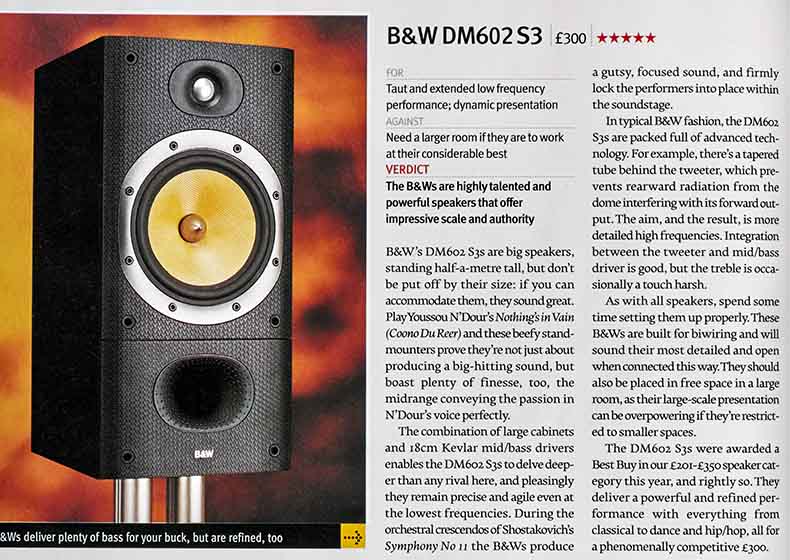
B&W's DM602 S3s were big standmounters that produced an even bigger sound.
They had the latest technology for the time: the two-way loudspeaker featured 25mm aluminium metal dome tweeters and B&W now-classic Kevlar mid/bass units. But they needed breathing space to perform at their best.
Granted that room, the speaker's dynamic presentation, precision and agility at the low end made them a talented proposition.
MORE: That Was Then… B&W 602 S3 review
Mission 780 (2002)
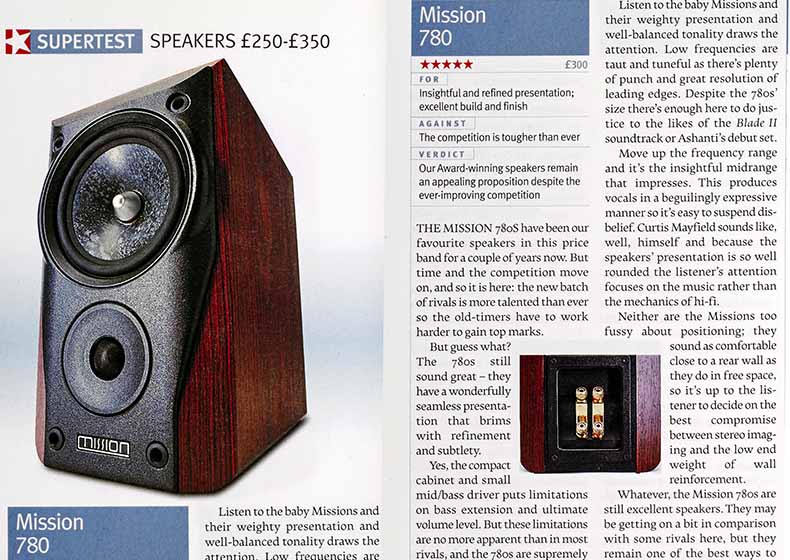
By 2002, Mission's 780 standmounters had bagged two Product of the Year Awards.
They had clever technical features, including a tweeter isolation system, a ceramic mid-bass driver and a cabinet construction that aided structural rigidity.
The bass was tight and powerful, the midrange impressively insightful and the tonal balance was even. The 780s weren't fazed by whatever music you threw at them.
Quad 11L (2004)

The Quad 11L speakers had a rock-solid build and excellent finish, but the sound quality was what really grabbed our attention.
In terms of transparency, detail resolution, speed and dynamics, price rivals really struggled to match them.
If you wanted the best sound and build quality at a reasonably affordable price, the Quad 11L standmounters offered astonishingly good value at the time.
Read the Quad 11L Classic review
ATC SCM 11 (2006)
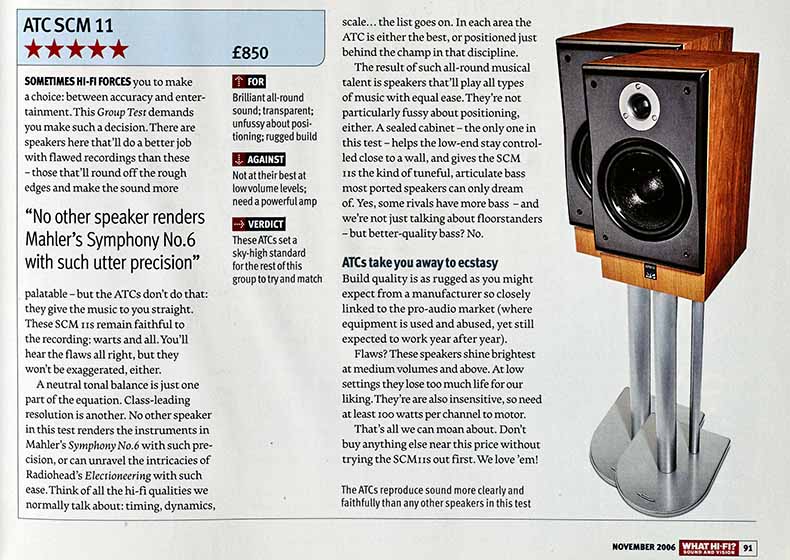
The ATCs were the type of speaker that could play any type of music with ease.
The Gloucestershire-based company opted for a sealed cabinet for agile bass performance. The speaker's two-way design had a mid/bass driver that was developed in-house and featured a hefty motor system.
As performers, they were talented in various hi-fi disciplines – class-leading (or not far off it) in terms of timing, dynamics and scale.
They lost a little performance at low volume and were not very sensitive – so they needed a hefty amplifier – but these were quibbles. They would only get better with the 2013 iteration.
Read our ATC SCM 11 review
Quad ELS 2805 (2008)
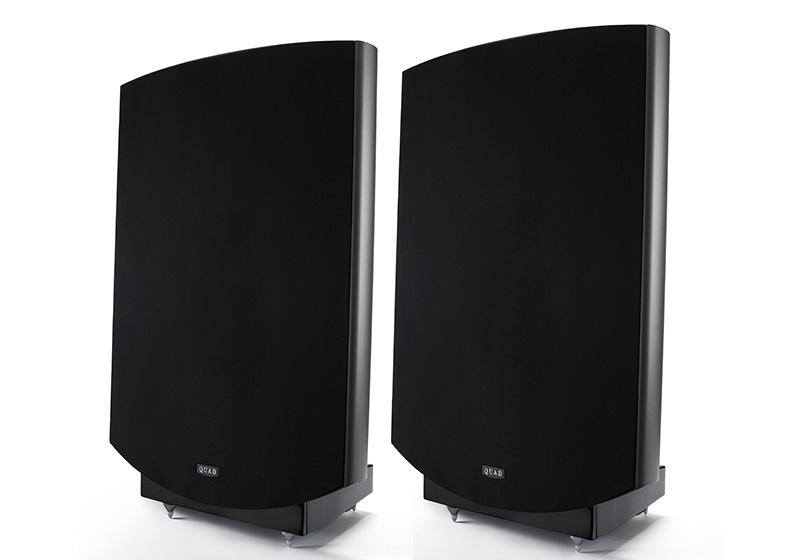
Quad showed no sign of resting on its laurels with the ESL-2805, the latest in a range of legendary electrostatic speakers that stretched back to the 1950s.
Care was needed setting up, as they fire equal amounts of sound backwards and forwards. Once done, the speaker's natural midrange, excellent detail resolution and cohesive sound came to the fore.
The lack of punch and slightly lumpy bass were drawbacks, but in other ways, these electrostatic speakers were truly exceptional.
Read our Quad ESL-2805 review
Wilson Audio Duette (2008)
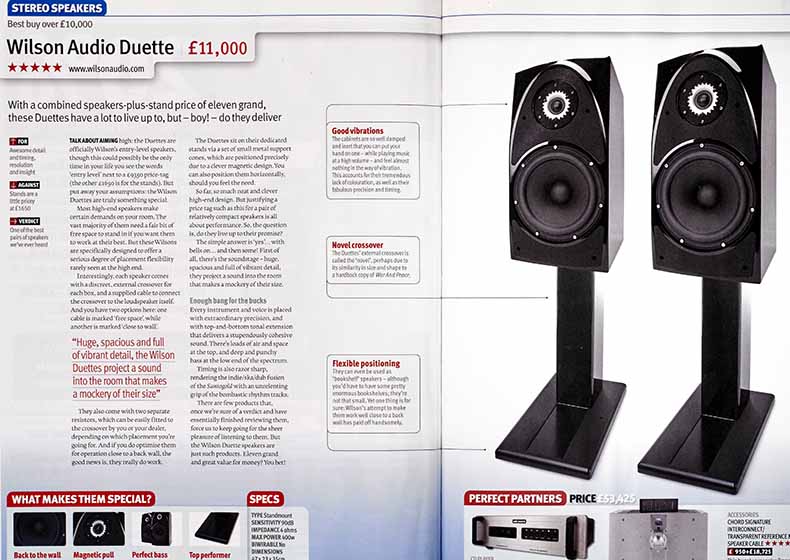
Wilson Audio's £11,000 'entry-level' Duette model made you question whether the company understood the term.
Designed to be unfussy when it came to placement, these large two-way standmounters had a great sense of detail, timing, resolution and insight.
The soundstage the Duette produced was huge, the bass well-articulated, and the adjustable crossover allowed for a wide range of positions (including horizontally).
One of the best pairs of speakers we've had the pleasure of listening to, offering surprisingly good value even at that huge price tag.
Read the Wilson Audio Duette review
Eclipse TD 712z Mk2 (2009)
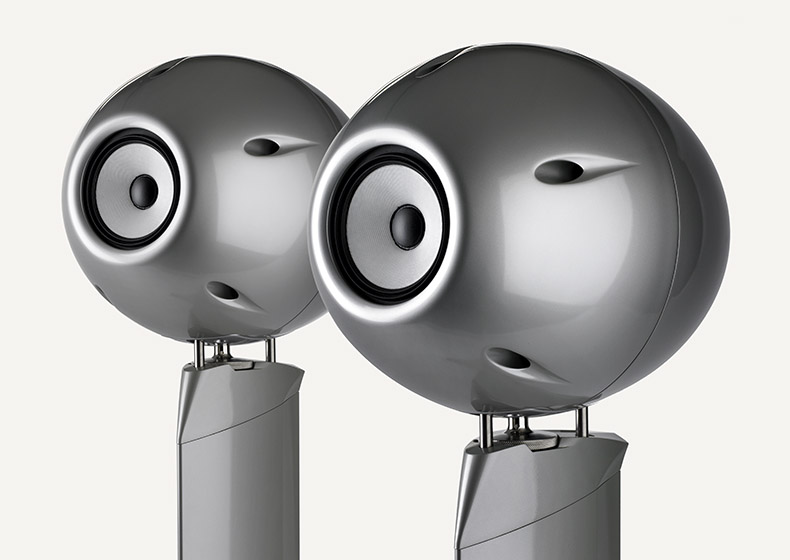
The TD 712z Mk2 encapsulated Eclipse’s approach to stereo speaker design with its single driver unit and sophisticated cabinet.
Intended to properly reproduce an impulse signal (a sharp, short sound), the Mk2 achieved this with aplomb. Timing was brilliant, as were dynamics, and these unique speakers sounded more coherent than just about anything else at the time – regardless of price.
They weren't as adept with the frequency extremes because of that single driver, but we could forgive their limitations. It was a different approach to speaker design that yielded a wildly entertaining sound.
Read our Eclipse TD 712z Mk2 review
Totem Mani-2 Signature (2010)
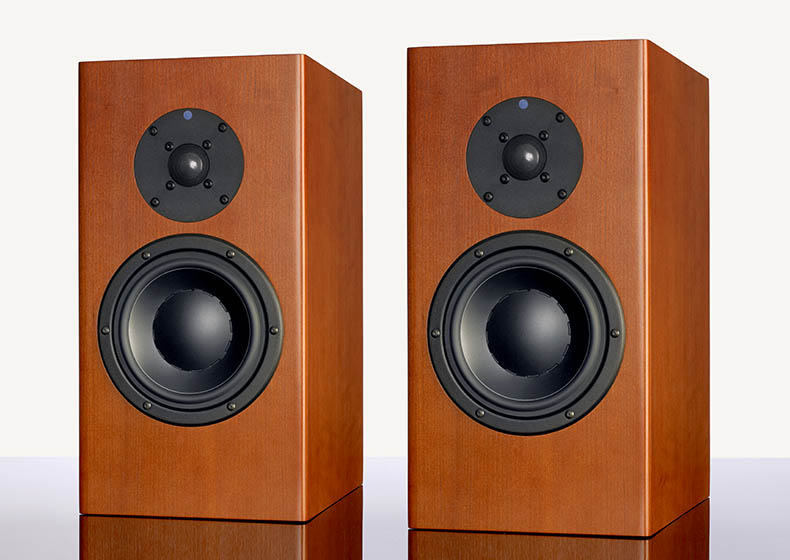
Glance in the direction of the Totem speakers and they look a bit ordinary.
In production for two decades, the Mani-2 Signature had stupendous bass power and authority thanks to isobaric bass loading.
The overall sound was cohesive and the sonic balance was highly musical. Despite their compact stature, they could offer huge scale too.
In terms of outright enjoyment, few, if any, were better at the price.
Read the Totem Mani-2 Signature review
ATC SCM 100A (2011)
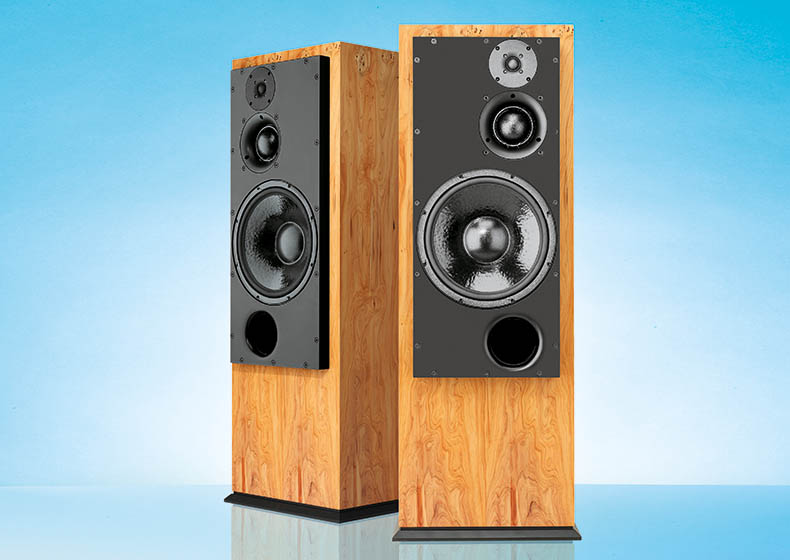
The SCM 100As were imposing and functional lookers, but capable of great sound.
Rarely had we heard bass sound as good, as loud or as nuanced. Tonally they were spot-on and capable of being immensely muscular as well as delivering a dose of subtlety too.
The ATC's range of abilities meant they were handy across a wide variety of music genres. Just be careful moving them: each speaker weighed a back-breaking 68kg.
Read our ATC SCM 100A review
B&W 800 Diamond (2012)

B&W's 800 Diamond speakers were packed to the rafters with cutting-edge technology.
They were the ultimate expression of B&W's approach to sound. From tweeter domes made out of diamond, to cleverly braced and shaped cabinets, to cones made out of Kevlar, and their iconic tweeter-on-top module – they were innovative speakers.
The bass was stunning, as was detail retrieval and dynamic reach. All of this sound was delivered with speed and punch, too. Quite possibly one of the best speakers ever made.
Read our B&W 800 Diamond review
KEF LS50 (2012)
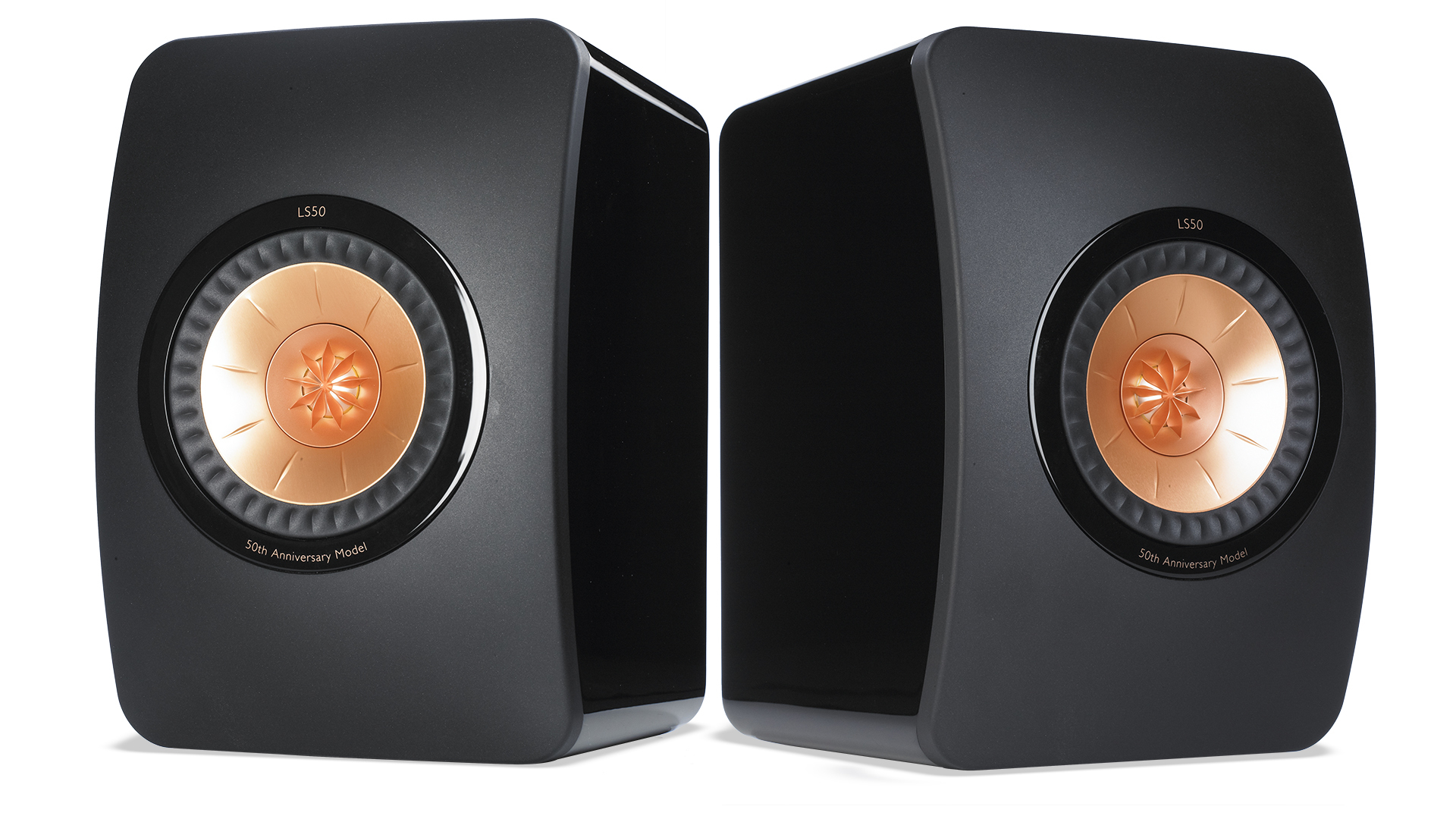
The KEF LS50s were, and remain, blindingly good speakers.
A lot of thought went into the cabinet, from the curved front panel to the materials used in the speaker's construction.
That craftsmanship was felt in the performance – thanks in no small part to KEF's innovative Uni-Q driver – which produced an insightful and musical sound.
The LS50 were a fun pair of speakers and formed the basis of the superb LS50 Wireless system. They continue their legacy in the current multi-Award-winning KEF LS50 Meta speakers with its new innovative MAT technology.
Read our original KEF LS50 review
Neat Iota (2012)
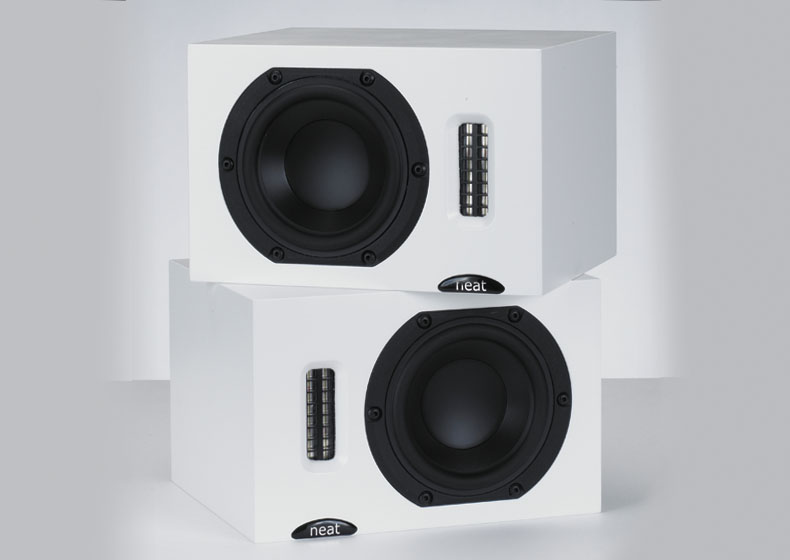
The Teesside-based loudspeaker company employed an unusual design for its compact speaker. They're designed to be used on their sides, not standing up, and they emit a hefty sound that's got plenty of detail, weight and scale for their size.
The tiny Iota speakers are unfussy about positioning – overall, the Neats are odd, but brilliantly so. A speaker unlike so many on this list and ones we've always been fond of.
Read our Neat Iota review
Focal Diablo Utopia (2012)

Focal's Diablos made a convincing case for spending £8000 on a standmounter.
The tweeter domes were fashioned out of the rigid substance Beryllium and the mid/bass motor system had a clever magnet arrangement, one that optimised magnetic power and minimised any losses.
All that technical wizardry generated a performance of exceptional detail, agile bass and seamless integration of voices and instruments.
They cost a fortune, but you got what you paid for.
Read the Focal Diablo Utopia review
ProAc Response D40R (2013)
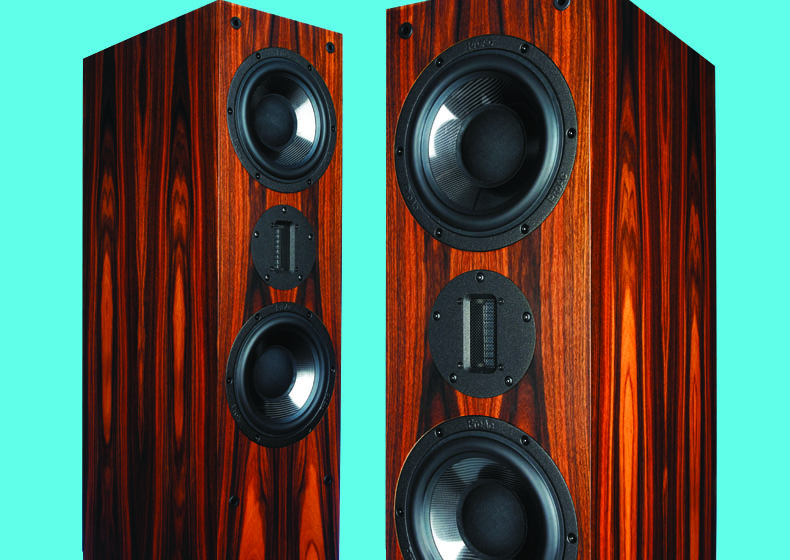
ProAc's Response D40R were tall speakers that needed a large room to make the most of their potential.
Give them breathing space and you had a musical speaker that was as articulate, transparent and dynamic a floorstander as we had heard at the price.
This was a floorstanding speaker that was good at getting out of the way and letting the music take centre stage.
Read the ProAc Response D40R review
Q Acoustics Concept 20 (2013)
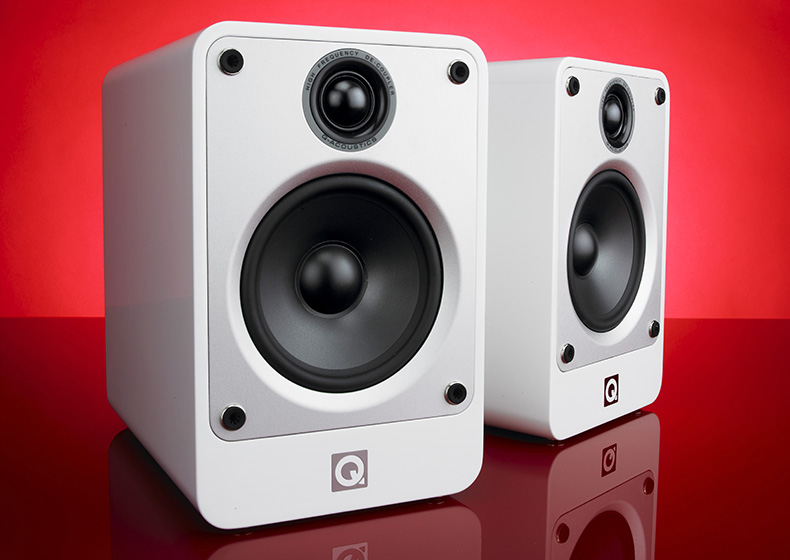
The strength of the competition at their price is fierce, but it speaks to the Q Acoustics Concept 20's talents that they remain a favourite.
They use a complex cabinet design, with two layers of MDF separated by a lossy Gelcore material that reduces cabinet resonances. The Concept 20s deliver a satisfying sense of punch and attack, while also producing an articulate and subtle presentation.
They are good at most things, making them a fine choice for all types of music. For standmounters comfortably under £500, they remain a solid choice.
Read our Q Acoustic Concept 20 review
PMC Twenty 26 (2014)
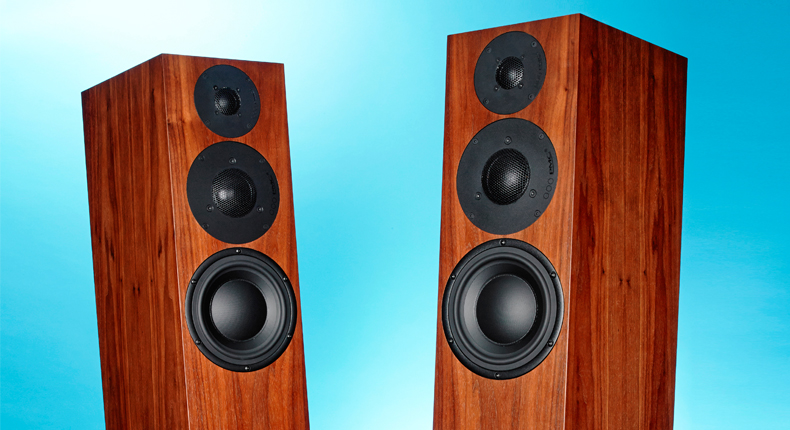
We've come to expect excellence from PMC's Twenty range and the Twenty 26 floorstanders are no exception.
Though there are more revealing high-end floorstanders available – mostly at higher prices – few are as musical or as balanced as the Twenty 26.
With strong dynamics, impressive detail and an unfussy, musical nature, it is hard to fault these speakers in any one particular area.
Read our PMC Twenty 26 review
Spendor SP2/3R2 (2016)
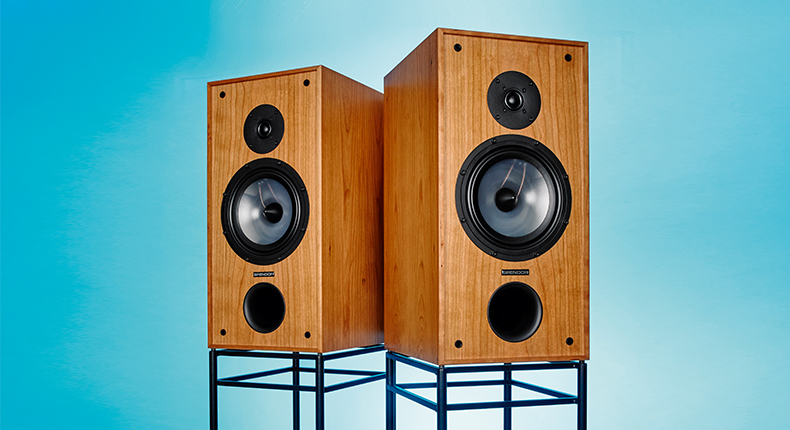
It would be easy to dismiss Spendor's SP2/3R2 as some kitsch, retro throwback, but that would be to miss out on an easy-going loudspeaker.
Some rivals produced a more exciting listen, but this large standmounter delivered a huge sonic stage with class-leading scale and authority.
They didn't grab your attention with sonic fireworks, but with a relaxed, insightful sound that left you focusing on the music itself.
Read the Spendor SP2/3R2 review
Spendor A4 (2017)
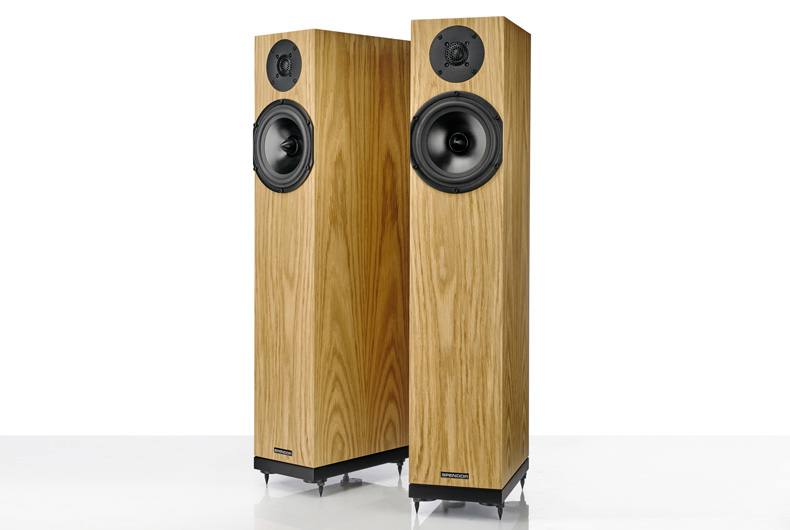
We've noted that recent Spendor speakers tended to prioritise analysis over entertainment.
But not so the A4 floorstanding model, which is capable of both. With an articlate and expressive presentation, they have plenty of detail, insight and a lovely midrange.
Put them away from a rear wall and these unfussy, compact floorstanders are splendid company.
Read the Spendor A4 review
JBL K2 S9900 (2017)
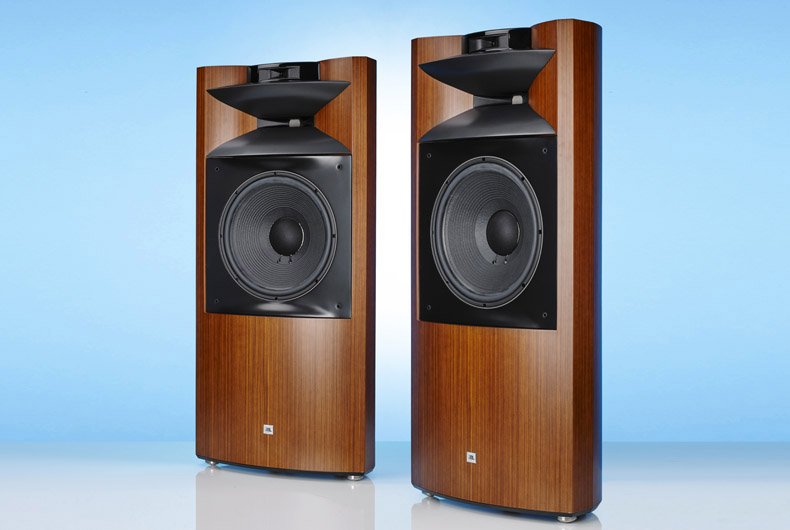
The K2s are fabulous, retro-styled speakers. Oddly proportioned – wider than they are deep – and weighing 83kg each, these speakers are not to be trifled with.
The horn-loaded tweeter and midrange units help their performance in larger rooms, offering exceptional resolution and great insight.
If you have a big enough bank balance, these JBLs are among the best speakers money can buy.
Read our JBL K2 S9900 review
ATC SCM50 (2019)
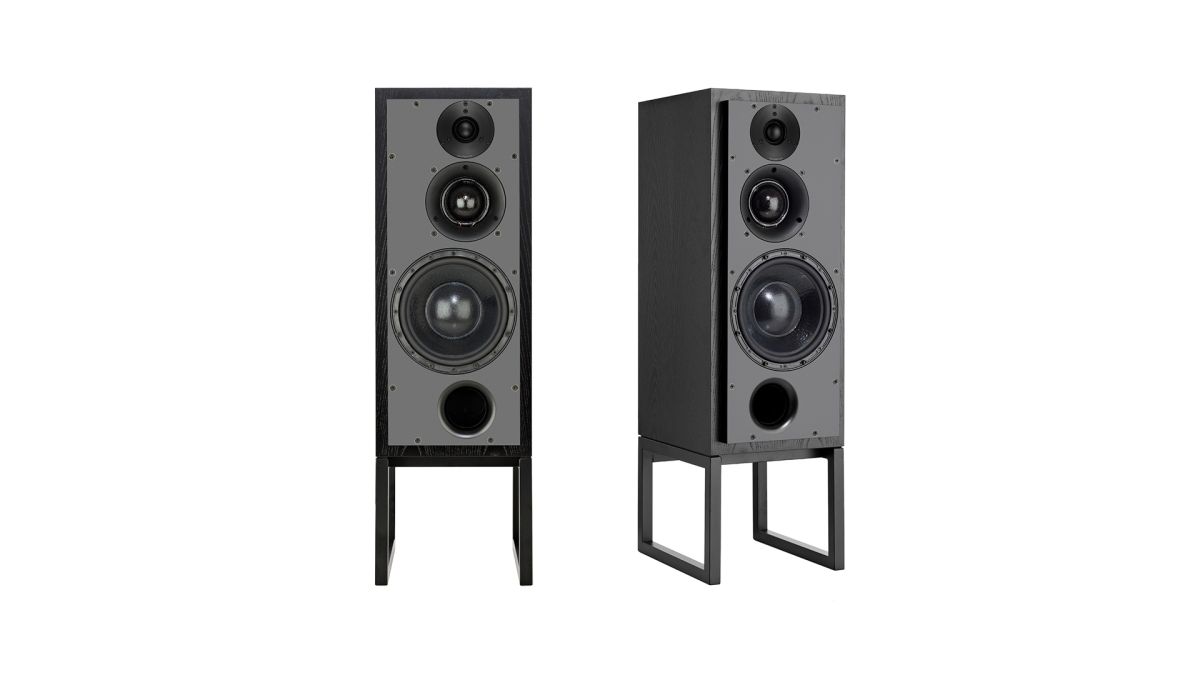
Technically, these SCM50 speakers have been around for much longer and have done duty as What Hi-Fi?'s reference speakers in our test rooms for over a decade before we officially reviewed them in 2019.
Their honest, balanced and transparent presentation makes them an ideal 'tool' for reviewing, allowing us to hear all the minute differences and subtleties when an amplifier or source is plugged in, regardless of price. Outside of their function as a staple of our reference system, these ATCs are beautifully dynamic, cohesive and musical, with a natural, authentic way with vocals that we haven't heard bettered anywhere else. They sound open, have plenty of attack and punch, solid stereo imaging and unearth layers of detail and nuance from a recording.
The rugged build won't be to everyone's tastes, and it's one of the few speakers that are designed to sound their best with the grilles on. All three drivers are made in-house with decades of engineering expertise and Pro-level reliability. These speakers don't try to flavour the signal they're fed; they simply try to reproduce the signal faithfully. The SCM50s sound great with any music thrown at them, and we continue to hold them in high regard – and continue to use them as our reference speakers – today.
Read the ATC SCM50 review
Audiovector R3 Arreté (2019)
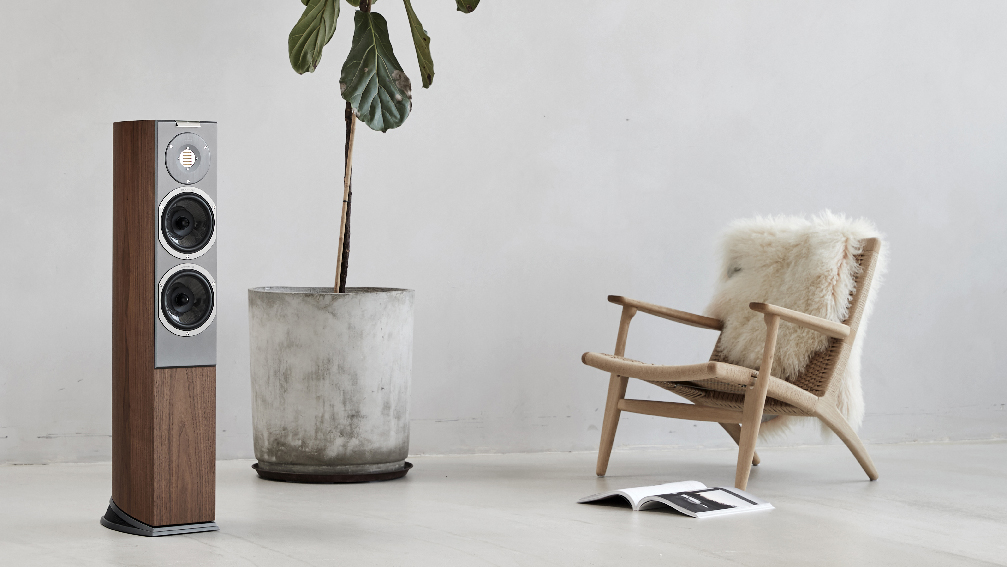
Audiovector's R3 Arreté represent the pinnacle of its R3 floorstanding range, with a classy build quality that exudes "understated luxury". A great deal of care has been taken with the cabinet, resonance control and mountings for the in-house drivers and AMT tweeter.
These relatively compact floorstanders won't dominate a room, but that doesn't prevent them from delivering a wide dispersion with excellent stereo imaging, and a satisfying amount of punch. These are stunningly articulate and detailed speakers, with a terrific sense of responsiveness that communicates the attack, drive and momentum of any song with nuance and precision.
Controlled and dynamic, with excellent low-end authority and an infectious sense of rhythm – we are hugely impressed. A left-field choice perhaps, but very rewarding for the money.
Read the Audiovector R3 Arreté review
Dali Oberon 5 (2020)
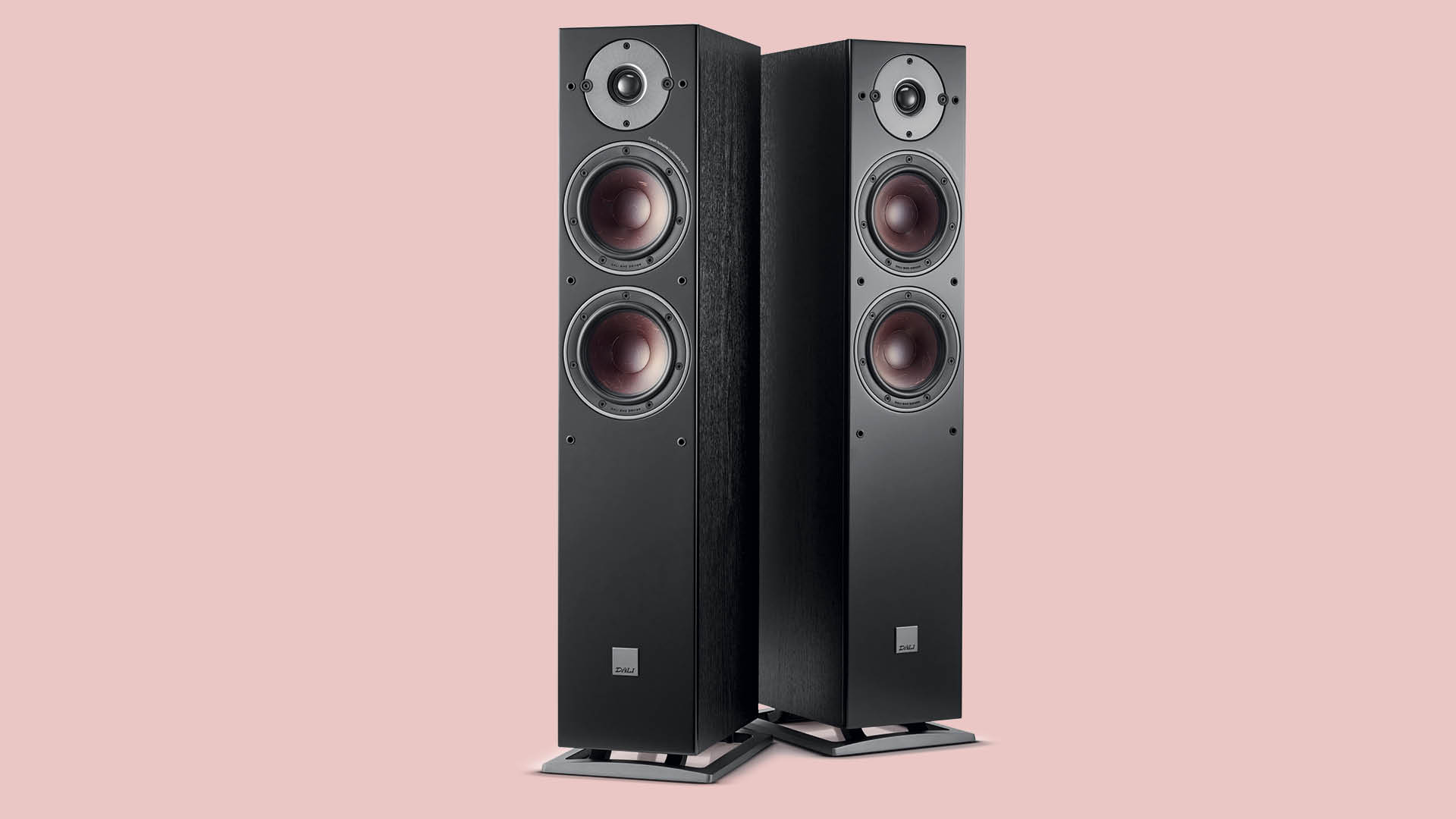
The immensely entertaining Oberon 5 remain one of our go-to recommendations for floorstanders, regardless of newer competition.
The two-way floorstanders feature twin 13cm mid/bass drivers and a 29mm dome tweeter, and like many Dali speakers, can be placed close to a wall without needing to be toed in towards the listening position. Coupled with the ability to partner nicely with budget and premium amplifiers, their unfussy nature makes them a likeable proposition.
Sonically, the Oberon 5 have terrifically expressive dynamics, controlled rhythms, a lovely way with voices, and a bold but balanced treble. They have a transparent nature and don't back down from complex arrangements, either, while always remaining fun to listen to.
Read the Dali Oberon 5 review
Fyne Audio F1-8 (2020)
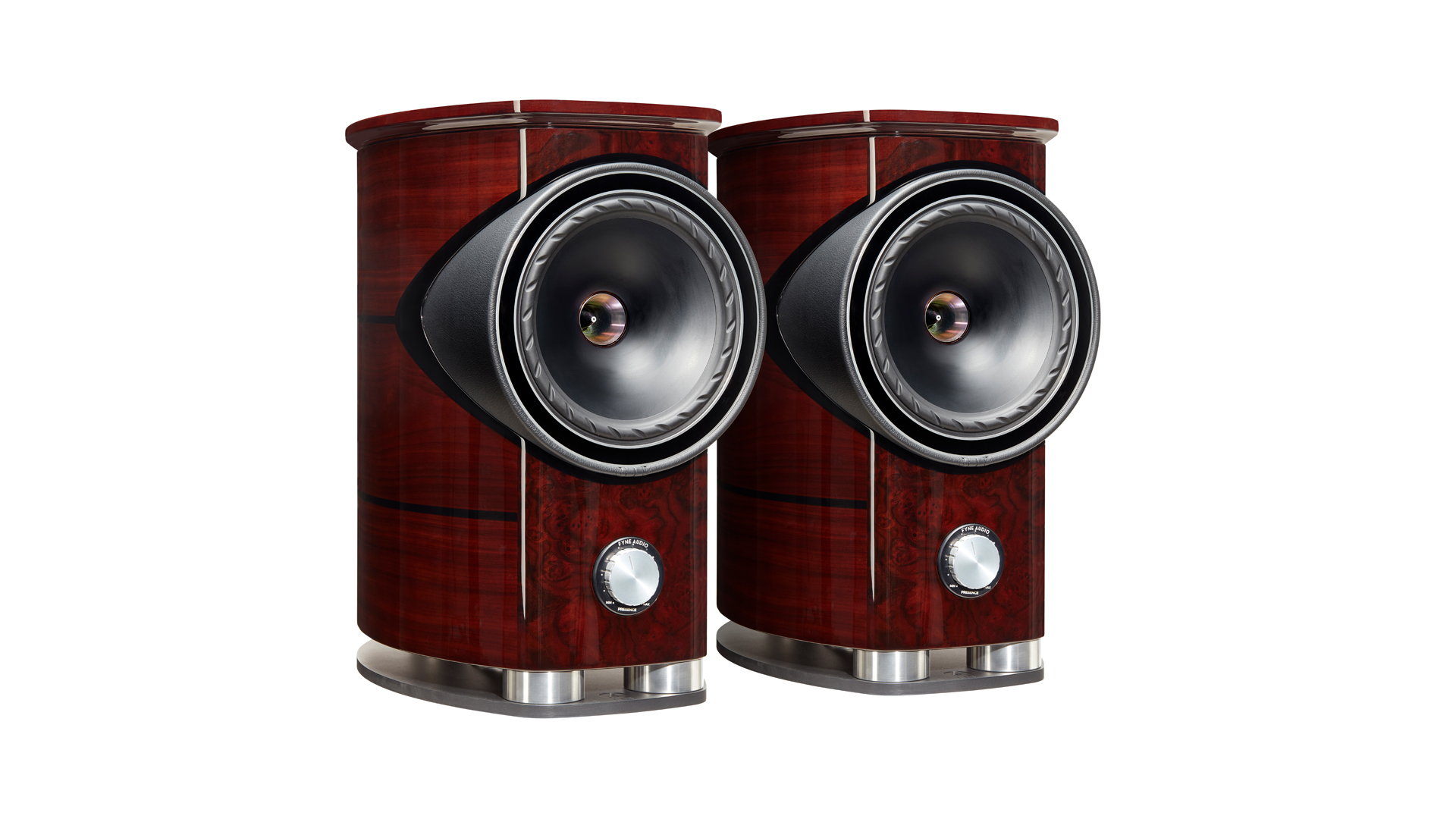
Fyne Audio's speakers may split opinions on aesthetics, but there's no doubting the luxurious, hand-finished cabinets' build and finish quality. While the Scottish brand only formed in 2017, the people involved are ex-Tannoy employees and have decades of experience and it shows in these premium standmounters.
The F1-8 feature an IsoFlare coaxial driver array, notches in the rubber surround to eliminate unwanted mechanical cone energy, and a clever bass diffuser arrangement in the plinth to make the most of the downward-firing bass port.
These deliver a properly weighty, authoritative bass performance that is also agile and tuneful. The mix of exuberance, nuanced detail and wide-ranging dynamics from a pair of standmounters is impressive and makes them an exciting listen. The highest top frequencies aren't the most refined so you'll need to partner them carefully, but these are excellent speakers overall.
Read our Fyne Audio F1-8 review
Wharfedale Diamond 12.3 (2021)
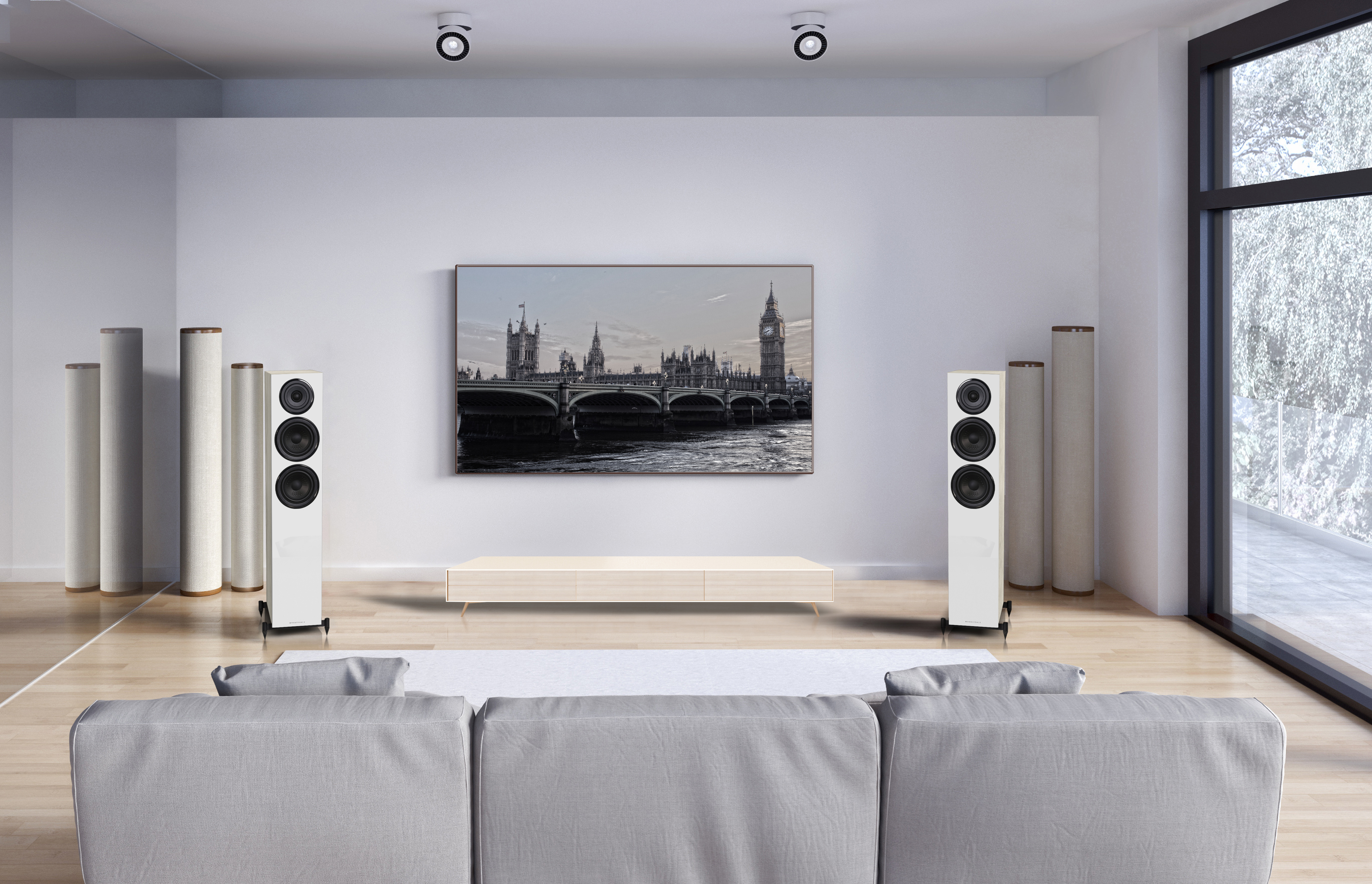
A refined, balanced and revealing performance at an affordable price point? No wonder Wharfedale's 12.3 floorstanders have an armful of What Hi-Fi? Award wins to their name.
Making an affordable floorstander is no mean feat, and the 12.3 follows in the footsteps of its 12.1 standmounter siblings (and indeed the long-running 12 series) to deliver a pair that works well with budget electronics while also sounding sophisticated and well-balanced for this level.
These accomplished towers have just enough of every sonic element to please, with agile rhythms, stable stereo imaging and lovely layers of detail all put together in a controlled, sure-footed manner. These speakers sound good even at lower volumes, too, which is a tricky balance to accomplish at any price level.
Read the Wharfedale Diamond 12.3 review
PMC Fact Fenestria (2022)
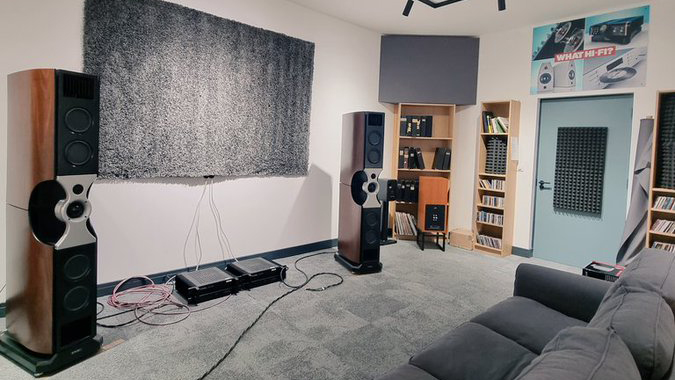
PMC's flagship, no-expense-spared floorstanders are a feat of engineering and deliver a jaw-dropping performance for the eye-popping price. These are some of the most awesome speakers we've heard and their presence in our test room (above) has left a lasting impression, not least because of their tall stature (1.7m).
The Fact Fenestria was an opportunity for PMC to flex their engineering know-how and create the best-sounding speaker it can, without any budget restrains. You'll have to read our full review for the nitty-gritty details, but suffice it to say PMC took great pains to minimise any speaker-generated distortions, finding ways to get rid of unwanted mechanical energy, vibrations or resonance from affecting the sound quality at every step of the speakers' design.
The resulting sound is one of the most astonishingly transparent and subtle presentations we've ever heard. Bassline are deep and powerful, harmonies are revealed with rich texture and engulf you in its expansive scale; but the Fenestrias never lost sight of PMC's evenhanded approach. The ease with which they deliver any piece of music, regardless of genre, is astoundingly captivating and nuanced. One of the very best.
Read the PMC Fact Fenestria review
Epos ES14N (2023)
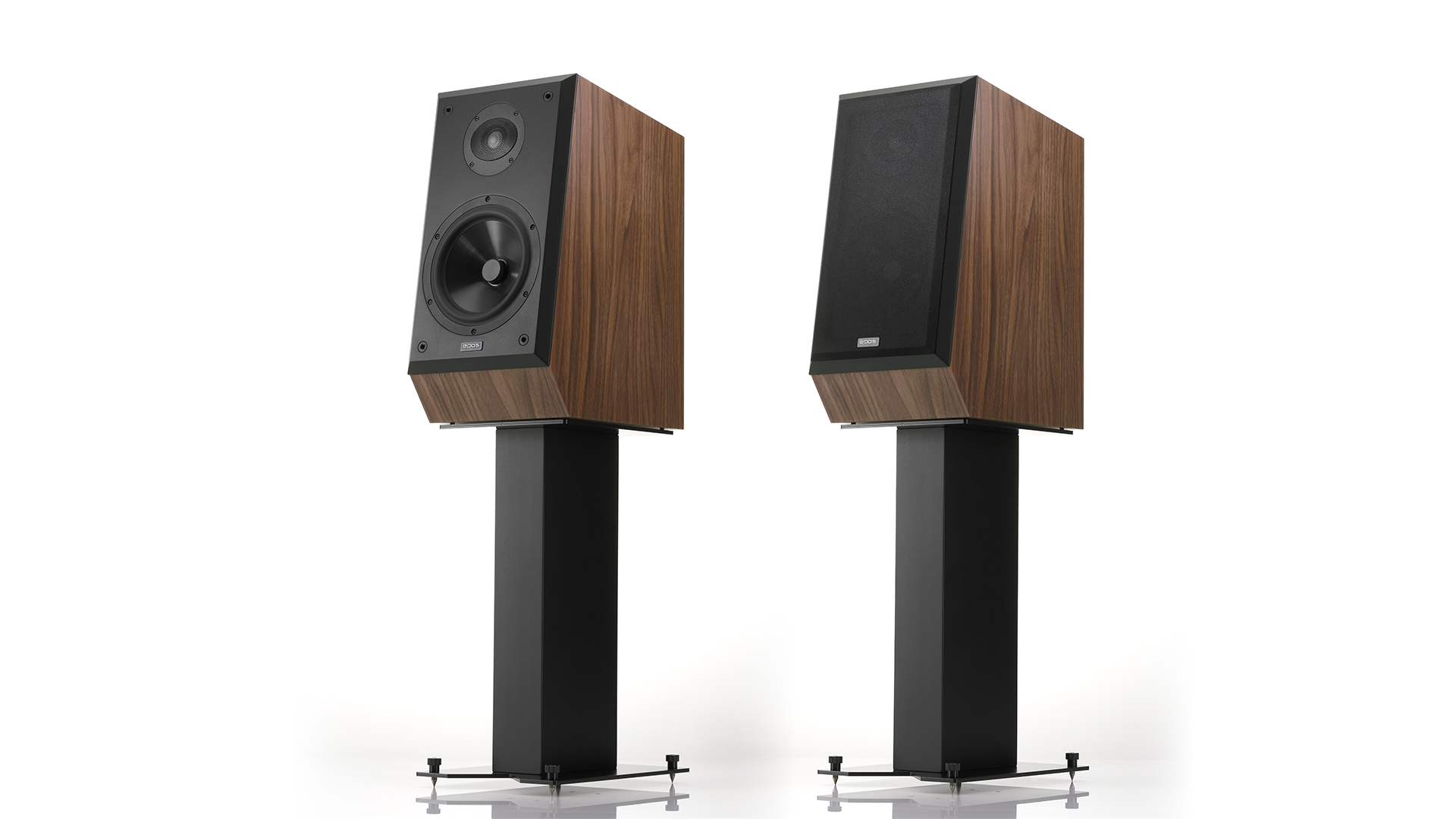
The well-regarded Epos brand from the 80s was revived recently thanks to being bought by respected speaker designer and audio consultant Karl Heinz-Fink. While the new ES14N shares much with the original ES14 speaker – not least its large standmounter body – inside is a thoroughly modern design when it comes to engineering.
The driver units are all-new, the crossover is more complex, and the sloped baffle aids time alignment between the drivers and reduces standing waves inside the cabinet. It also lends to the ES14N's slightly odd look overall, but we have come to be charmed by its aesthetic.
The speakers major in analysis, control and organisation, but are deft enough to reveal subtleties and nuances in dynamics. Give them time to run in and you'll be rewarded with a cohesive, balanced sound that is composed and insightful. The Epos ES14N deliver an all-round performance that we haven’t heard bettered at its price point.
Read the Epos ES14N review
Neat Petite Classic (2024)
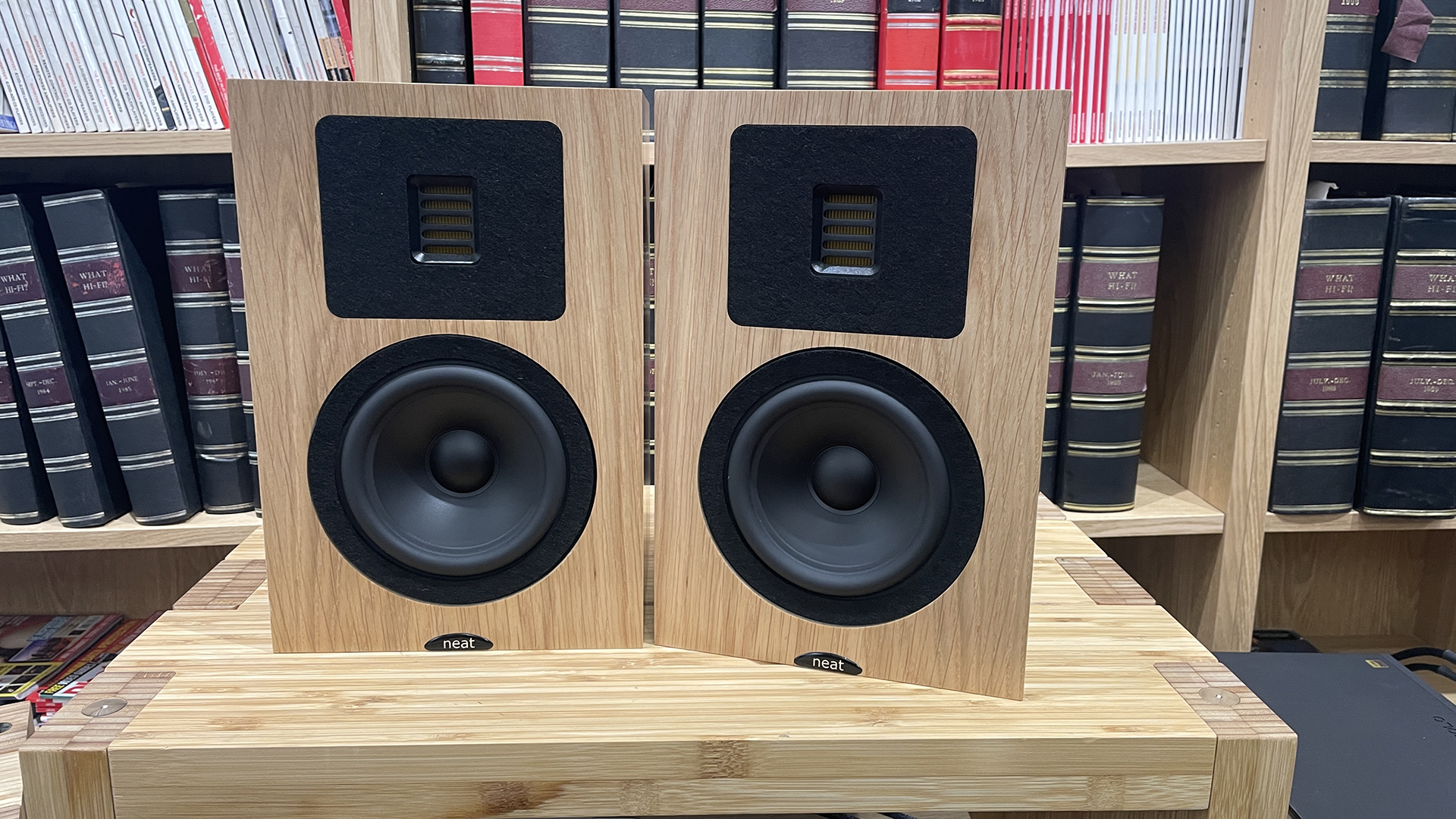
Small, fun, and endlessly musical. These standmounters may have a compact footprint but their personality far outshines their size or modest build. Neat's fifth-generation Petite Classic model has a sound signature that can be traced back to its debut pair in the early 90s, with spot-on timing and a lively, enthusiastic presentation that never fails to put a smile on your face.
Don't expect lashings of deep bass from such petite cabinets, and a smoothed-off treble makes them easy to listen to; they're not exactly neutral, but we can't fault that sure-footed, agile and musically cohesive performance.
They look unassuming, but these Neats are ideal for those wanting high-quality, premium sound in a small space.
Read the Neat Petite Classic review
YG Acoustics Carmel 3 (2024)
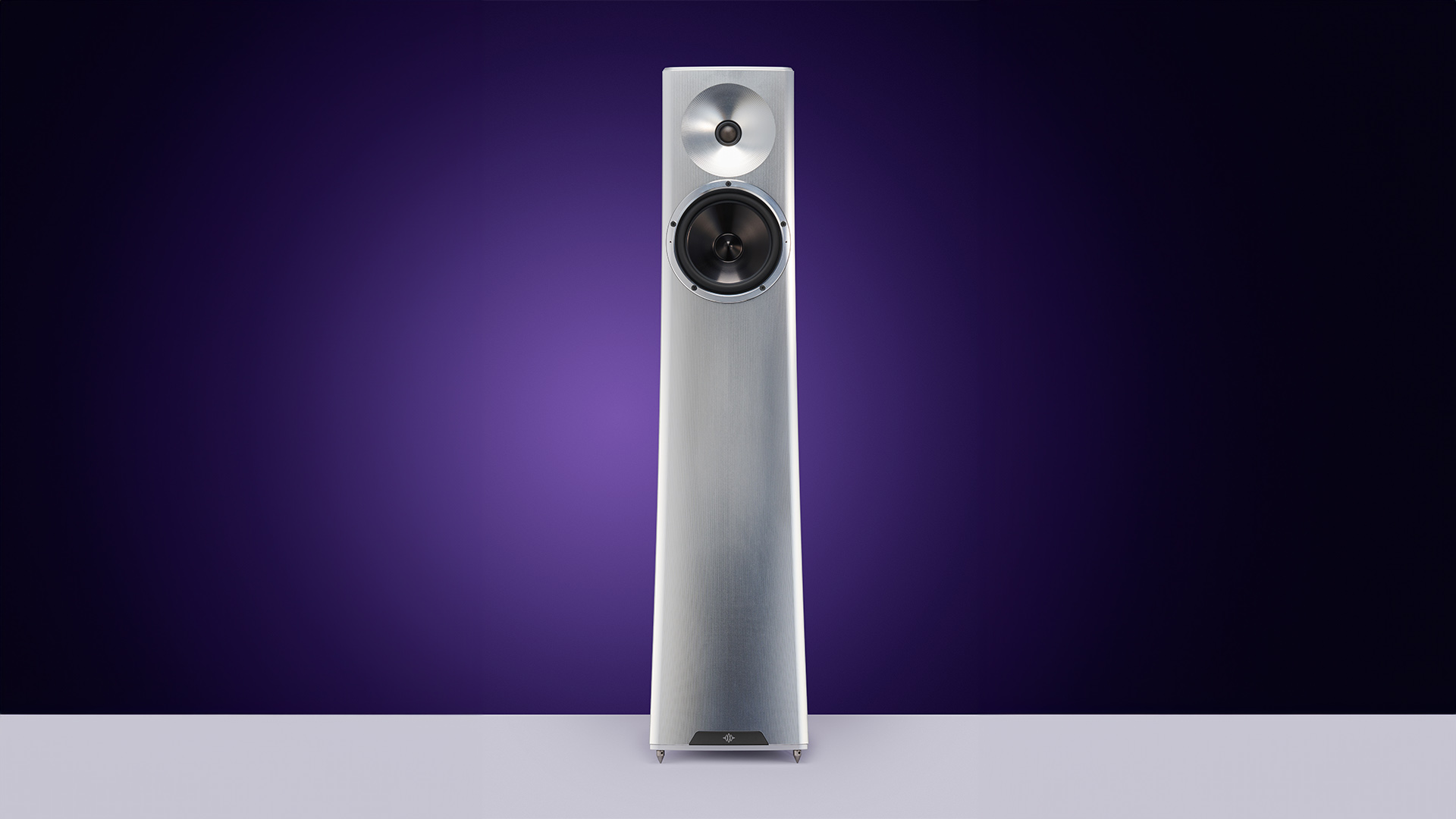
YG Acoustics' distinctive, high-end Carmel 3 speakers are a lesson in not judging by looks alone – or even at first listen. These small, plain-looking speakers hide an elaborately engineered design that is evident in the high-quality aluminium alloy cabinet, in-house precision machining, use of high-quality components and drivers machined out of a solid 2kg billet of aircraft-grade aluminium. Each cabinet takes a day and a half to make.
Give them a few days of running in to calm that hard edge, and you'll be shocked by the ferociously punchy and deep, low-end notes they can pump out with verve and authority. They are tonally even and reveal a huge amount of detail, too, but be warned that these are tremendously transparent speakers – and they aren't forgiving of poor recordings. Given pristine quality recordings and careful partnering, though, these speakers are superb performers.
Read the YG Acoustics Carmel 3 review
MORE:
How to choose the right speakers and get the best sound
19 of the best British speakers of all time
Check out our Hall of Fame hi-fi and home cinema products
Best speakers we currently recommend across all budgets

Kashfia is the Hi-Fi and Audio Editor of What Hi-Fi? and first joined the brand 13 years ago. During her time in the consumer tech industry, she has reviewed hundreds of products (including speakers, amplifiers, turntables and headphones), been to countless trade shows across the world and fallen in love with hi-fi kit much bigger than her. In her spare time, Kash can be found tending to an ever-growing houseplant collection and shooing her cat Jolene away from spinning records.
